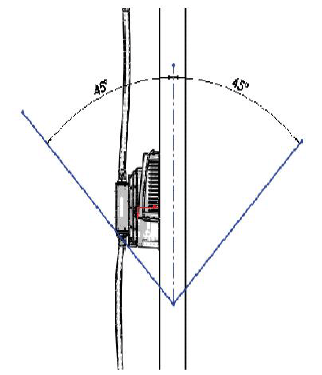Frequently Asked Questions
Find quick answers about the installation, usage, and maintenance of your dosing pump on our Frequently Asked Questions page. Learn about the correct position, chemical compatibility, and tips to prevent issues.
No. The dosing pump must be installed in the vertical position, as indicated in the manual. It can vary up to 45° from the vertical.



Vertical position: correct

Horizontal position: wrong
To use the dosing pump with a specific chemical product, you should check the chemical compatibility table, as not all materials constituting the dosing pump may be suitable for working with the chemical product you need to dose. If you have a dosing pump that does not meet the requirements or are unsure if the materials are compatible, contact our consultants to change the corresponding materials.
The dosing pump has check valves to prevent the chemical product from returning to the storage tank. However, if the injection point is at a lower level than the storage tank, a siphoning effect occurs, which, due to the pressure difference, tends to inject the chemical product with the dosing pump turned off. To prevent this effect, it is recommended to relocate the injection point to a higher location than the chemical product storage tank. If this change is not possible, an anti-siphon injection valve should be installed, which has a hastelloy spring to close the valve every time the dosing pump is not activated.
You can perform a chemical cleaning without coming into contact with the chemical product or its salts. You should have containers of muriatic acid and water. First, place the dosing pump in the water tank and wait for it to be cleaned of all the chemical product present in the hoses and inside the head. Then, place the dosing pump in the muriatic acid tank and recirculate it for 5 minutes. Note that at this point, sodium (or calcium) hypochlorite salts will begin to break down. Finally, after installation, the dosing pump should be recirculated with water again to prevent acid from coming into contact with hypochlorite.